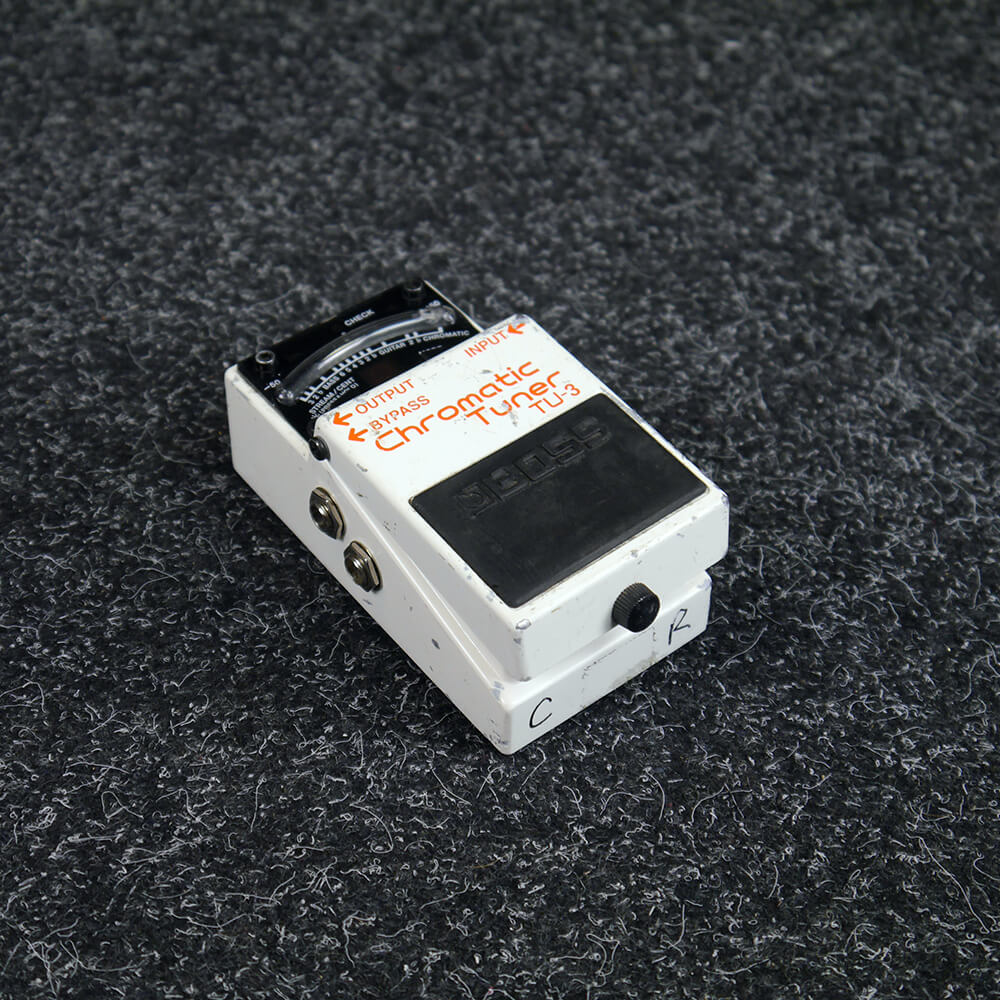

Owner’s Manual, Leaflet (“USING THE UNIT SAFELY,” “IMPORTANT NOTES,” and “Information”), Dry battery/9 V type (6F22)ĪC adaptor: PSA series, Parallel DC cord: PCS-20A Supplies power for up to seven BOSS compact effect pedalsĭC 9 V: Dry battery 6F22 (9 V) type (carbon), Dry battery 6LR61 (9 V) type (alkaline), AC Adaptor (PSA series: optional)ģ0 mA (DC 9 V), 85 mA (DC 9 V, when High Brightness mode is on).Tuner automatically mutes when the tuner is on.Flat tuning is supported with Guitar Flat mode, which allows for “drop” tunings up to six semitones below standard pitch.Chromatic and Guitar/Bass mode (tune by string number, with support for 7-string guitars and 6-string basses).
#Tu 3 chromatic tuner verification
Accu-Pitch Sign function provides visual verification when tuning is complete.It s the new-standard tuner that no guitarist or bass player should be without 21-segment LED meter with brightness control. High-Brightness mode enhances meter visibility outdoors The TU-3 incorporates a convenient Note Name Indicator that can display notes of 7-string guitars and 6-string basses, while the Flat-Tuning mode can support up to six half-steps.21-segment LED meter with brightness control.It’s the new-standard tuner that no guitarist or bass player should be without! The TU-3 incorporates a convenient Note Name Indicator that can display notes of 7-string guitars and 6-string basses, while the Flat-Tuning mode can support up to six half-steps.

Choose between Chromatic or Guitar/Bass tuning modes, and enjoy visual pinpoint tuning verification with the Accu-Pitch Sign function. Housed in a tank-tough BOSS stompbox body, the TU-3 features a smooth 21-segment LED meter with a High-Brightness mode that cuts through the harshest outdoor glare. But like I said, I never heard too much of a problem with a TU-2 buffer nor have I heard much if any difference between any of the commonly available BJT or JFET buffer circuits other than differences that arise from their differing input impedances.The world’s top-selling stage tuner, the BOSS TU-2, evolves and improves with the debut of the new TU-3. So, it's not like all devices used as buffers in guitar signal chains are identical.

And no buffer is going to sound exactly like your direct in tone although some buffers try to develop workaround to replicate an amp front end - like the valuvlator which has a tube preamp stage ahead of a buffer. Yes, it's true, some buffered bypass schemes might depart from perfect linearity more than others, some might be truely unity gain some might be slightly less than unity gain, and some switching schemes might have something else going on besides buffering - like some of the Boss pedals that mix wet and dry signals have not only buffers but also pre and de emphasis eq at the front and back of the pedal circuit that might affect tone. Both true bypass and buffered bypass switching schemes are solutions for tone suck. But I don't think it's even accurate to say a buffer causes "tone suck." That phrase was invented to describe the frequency balance and signal level changes that happen when a hardwire bypass pedal with a low input impedance loads down the guitar. I don't use the tuner anymore because I found the Turbo Tuner to be a better tuner, and now that I'm using a small board I've gone buffer-less. Never used a TU-3 and I haven't seen a schematic on either. Personally I've never heard a problem with the TU-2 buffer.


 0 kommentar(er)
0 kommentar(er)
